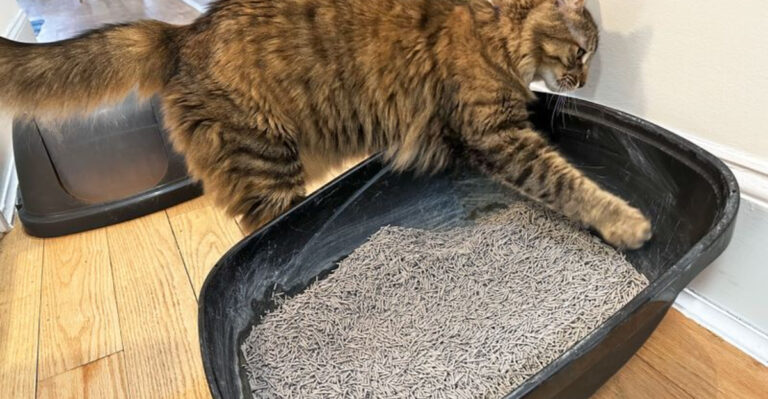10 Essential Things To Know About Acid Reflux In Cats
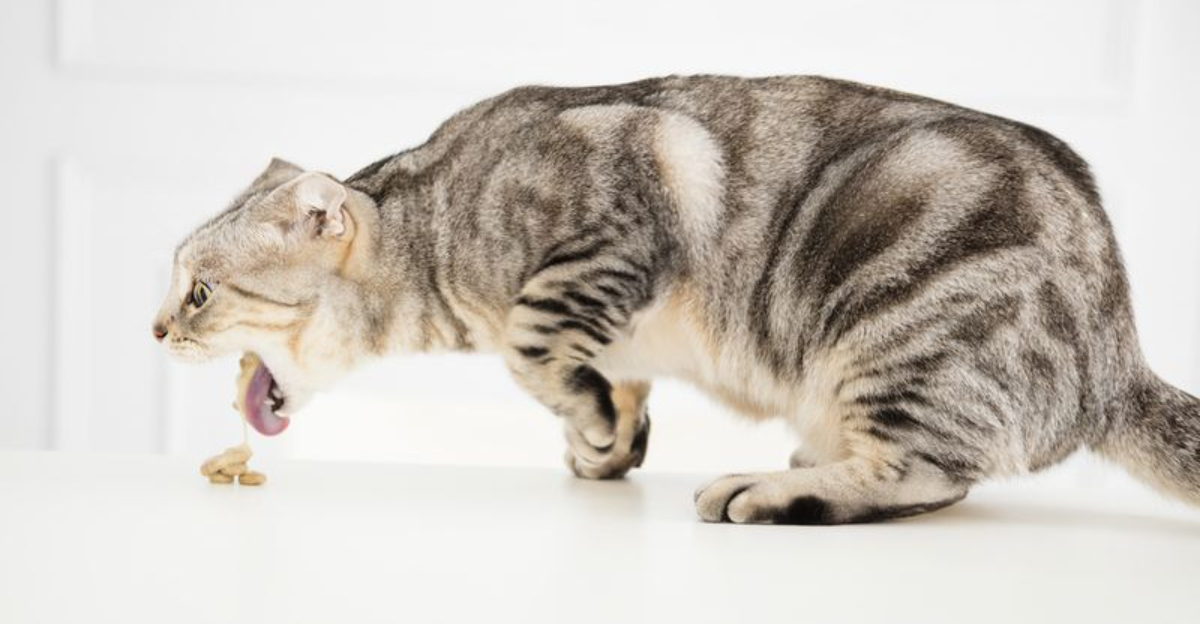
Cats may seem tough, but they can suffer from health issues just like we do. Acid reflux is one of those problems that can make your furry friend uncomfortable without you even knowing it.
When stomach acid flows back into a cat’s esophagus, it causes irritation and pain that can change your pet’s behavior and eating habits.
Understanding this condition can help you spot the signs early and get your cat the help they need.
1. Mysterious Mealtime Behavior Could Be A Warning Sign
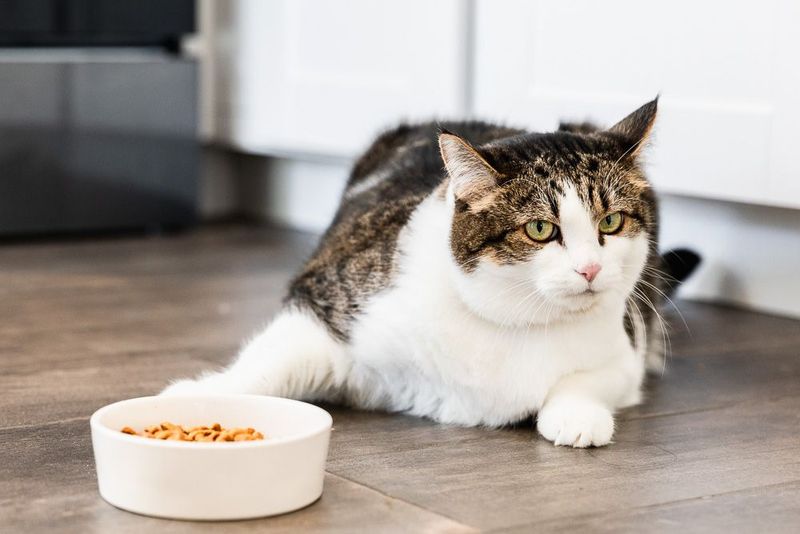
Cats with acid reflux often approach their food bowl eagerly but then back away suddenly. This puzzling behavior happens because eating triggers pain when stomach acid rises up their throat.
You might notice your cat licking their lips excessively, swallowing repeatedly, or even drooling more than usual after meals. Some cats will paw at their mouth or throat as if something is stuck there.
Weight loss often follows because your cat associates eating with discomfort. If your normally food-loving feline starts acting strange around mealtime, don’t dismiss it as pickiness – their throat might be burning!
2. Frequent Vomiting Isn’t Just Hairballs
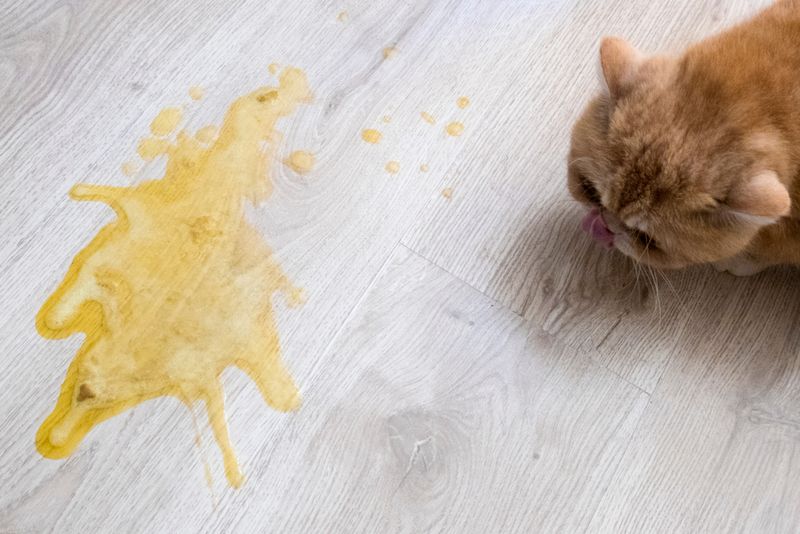
Many cat owners brush off occasional vomiting as normal, blaming it on hairballs or eating too fast. However, when vomiting becomes regular, acid reflux might be the culprit behind those mysterious messes on your carpet.
The vomit from acid reflux often contains foam or yellow bile, especially if it happens when your cat’s stomach is empty. Morning vomiting is particularly suspicious, as lying down all night allows acid to creep up the esophagus.
Unlike hairball episodes, reflux-related vomiting isn’t preceded by that distinctive hacking sound cats make when coughing up fur.
3. Bad Breath Can Signal Stomach Troubles
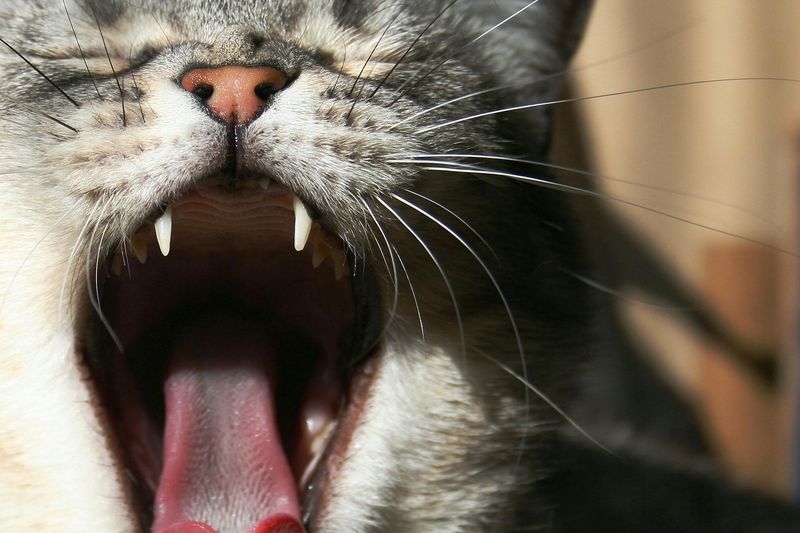
That fishy smell coming from your cat’s mouth might not just be from their tuna dinner. Persistent bad breath can actually indicate acid reflux problems brewing beneath the surface.
When stomach acid repeatedly washes into the esophagus and mouth, it creates a distinctive sour odor that differs from the usual smell of tartar buildup. You might notice this smell gets worse after your cat eats or when they’re lying down.
While dental issues remain the most common cause of feline halitosis, ruling out acid reflux is important – especially if your cat’s breath suddenly changes or if they show other reflux symptoms.
4. Voice Changes Mean Your Cat Is Hurting
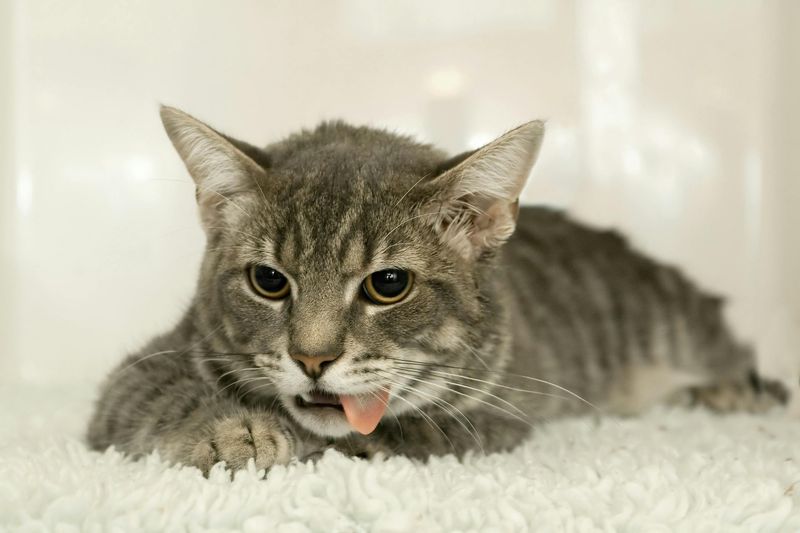
Has your chatty cat suddenly gone quiet? Or maybe their once-smooth meow now sounds raspy or hoarse? Acid splashing onto the larynx (voice box) can inflame vocal cords, changing how your cat sounds when they communicate.
Some cats with reflux become noticeably less vocal, while others may meow with a different pitch or quality. You might even notice your cat attempting to meow but producing little or no sound.
This voice change happens because the same acid irritating your cat’s esophagus can reach all the way up to their throat, causing inflammation that affects their ability to vocalize normally.
5. Overweight Cats Face Higher Risks
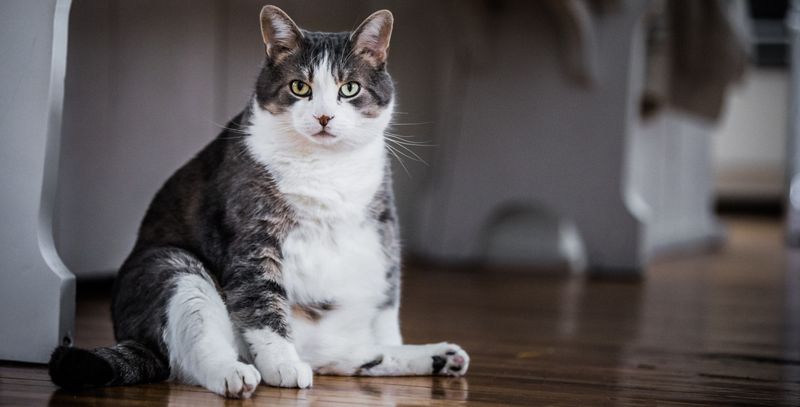
That adorable chubby belly might be putting extra pressure on your cat’s digestive system. Excess weight around the abdomen compresses the stomach, forcing acid upward into the esophagus – especially when your cat is lying down.
Studies show overweight cats are nearly three times more likely to develop acid reflux than their slimmer counterparts. The fat tissue also produces inflammatory substances that can worsen reflux symptoms and damage the esophageal lining.
Helping your pudgy kitty slim down through portion control and increased play time not only improves their overall health but can dramatically reduce reflux episodes.
6. Certain Foods Trigger Flare-Ups
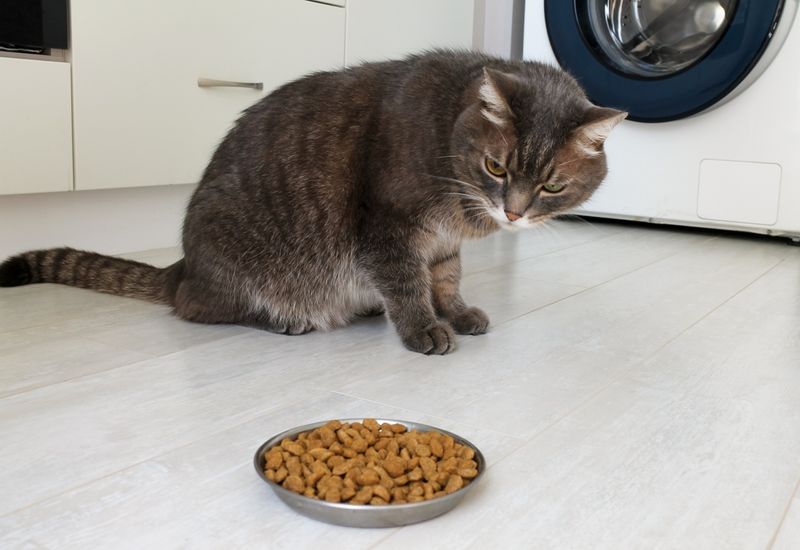
Just like humans, cats have food triggers that can make acid reflux worse. High-fat foods are particularly problematic because they slow stomach emptying, giving acid more time to flow backward into the esophagus.
Dairy products, despite many cats’ love for cream, can be especially troublesome. Many adult cats lack the enzyme needed to digest lactose properly, leading to fermentation in the gut and increased acid production. Some cats also react poorly to certain proteins or grains.
Working with your vet to identify trigger foods through an elimination diet can help manage your cat’s reflux without medication.
7. Stress Makes Stomach Acid Bubble Up
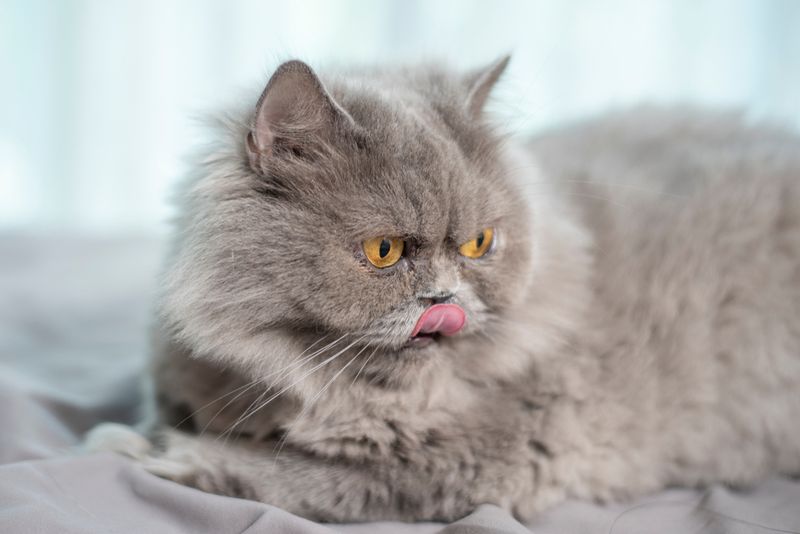
Cats are sensitive creatures, and their digestive systems respond strongly to emotional states. When your cat feels anxious or stressed, their body produces excess stomach acid while simultaneously slowing digestion – the perfect recipe for reflux.
Common stressors like moving homes, new pets, visitors, or changes in routine can trigger reflux episodes. You might notice symptoms worsen during thunderstorms or when the vacuum cleaner comes out.
Creating safe spaces where your cat can retreat and maintaining consistent routines helps reduce stress-related reflux. Pheromone diffusers and prescribed anti-anxiety supplements can also calm an anxious cat’s overactive stomach.
8. Medication Options Beyond Antacids
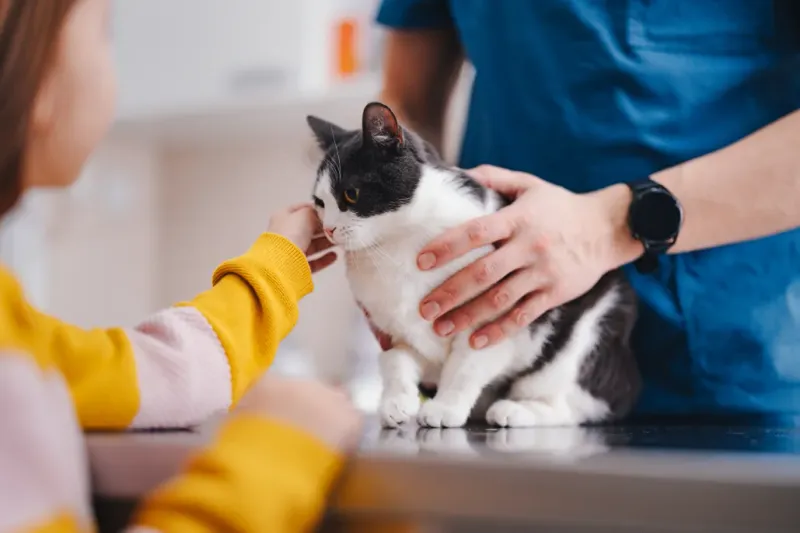
Treating feline acid reflux often requires more than just neutralizing stomach acid. Veterinarians typically prescribe proton pump inhibitors like omeprazole, which reduce acid production at the source rather than simply neutralizing existing acid.
For cats with esophageal inflammation, sucralfate creates a protective coating that allows irritated tissue to heal. Prokinetic medications help by improving stomach emptying and strengthening the sphincter that prevents acid backflow.
Never give your cat human antacids without veterinary guidance – ingredients like aluminum can be toxic to cats. Medicine typically works best when combined with dietary changes and weight management for a comprehensive treatment approach.
9. Elevated Feeding Stations Provide Relief
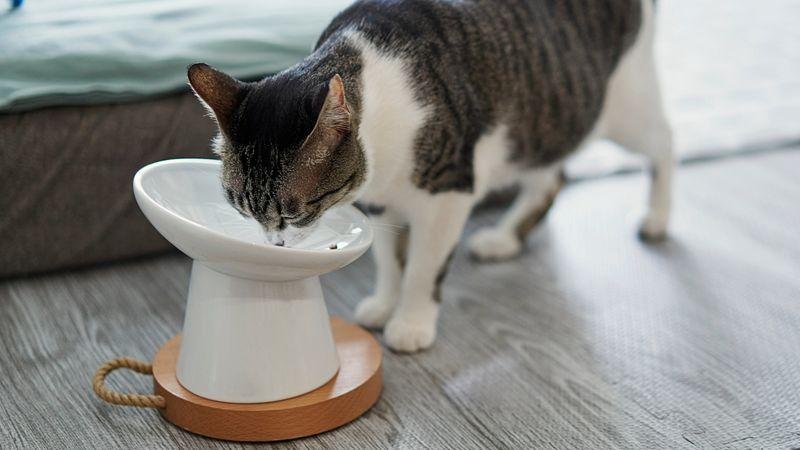
Something as simple as raising your cat’s food bowl can make a significant difference in managing reflux symptoms. Elevated feeding stations use gravity to help food and acid stay in the stomach where they belong.
The ideal height allows your cat to eat without bending down or stretching up – roughly level with their lower chest when standing. This position reduces pressure on the stomach and makes it harder for acid to travel upward against gravity.
Many cats show immediate improvement when switched to elevated feeding, with reduced vomiting and less post-meal discomfort. As an added bonus, raised bowls can also help older cats with arthritis eat more comfortably.
10. Untreated Reflux Can Cause Serious Damage
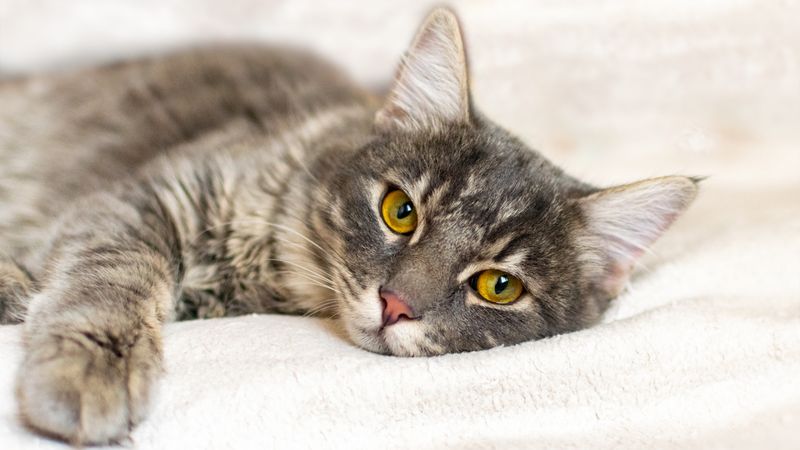
Acid reflux isn’t just uncomfortable for your cat – it can lead to dangerous complications if left untreated. Chronic exposure to stomach acid can create ulcers in the esophagus that bleed and cause pain.
In severe cases, the esophagus may narrow due to scar tissue formation, making it difficult for your cat to swallow food or even water. This condition, called stricture, sometimes requires surgical intervention.
Long-term inflammation can even change the cellular structure of the esophageal lining, a condition called Barrett’s esophagus that increases cancer risk. Early intervention not only relieves your cat’s discomfort but prevents these serious long-term complications.




